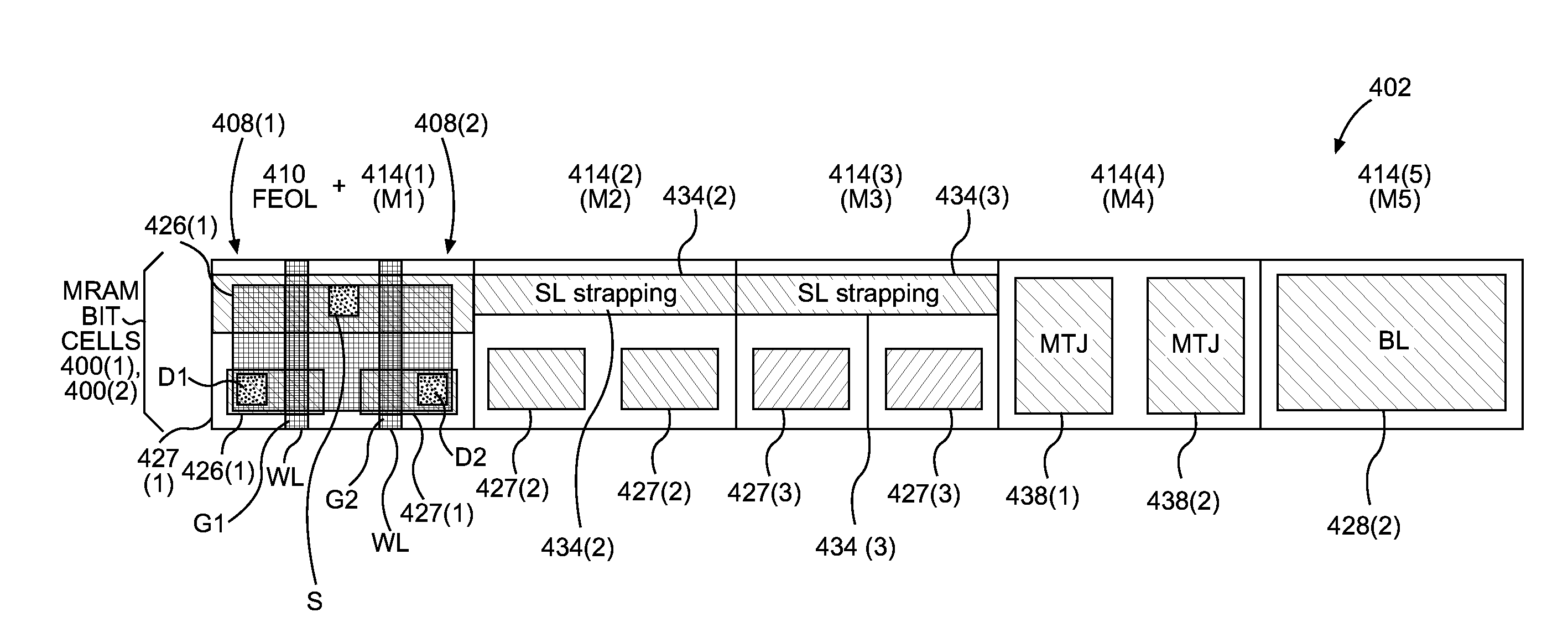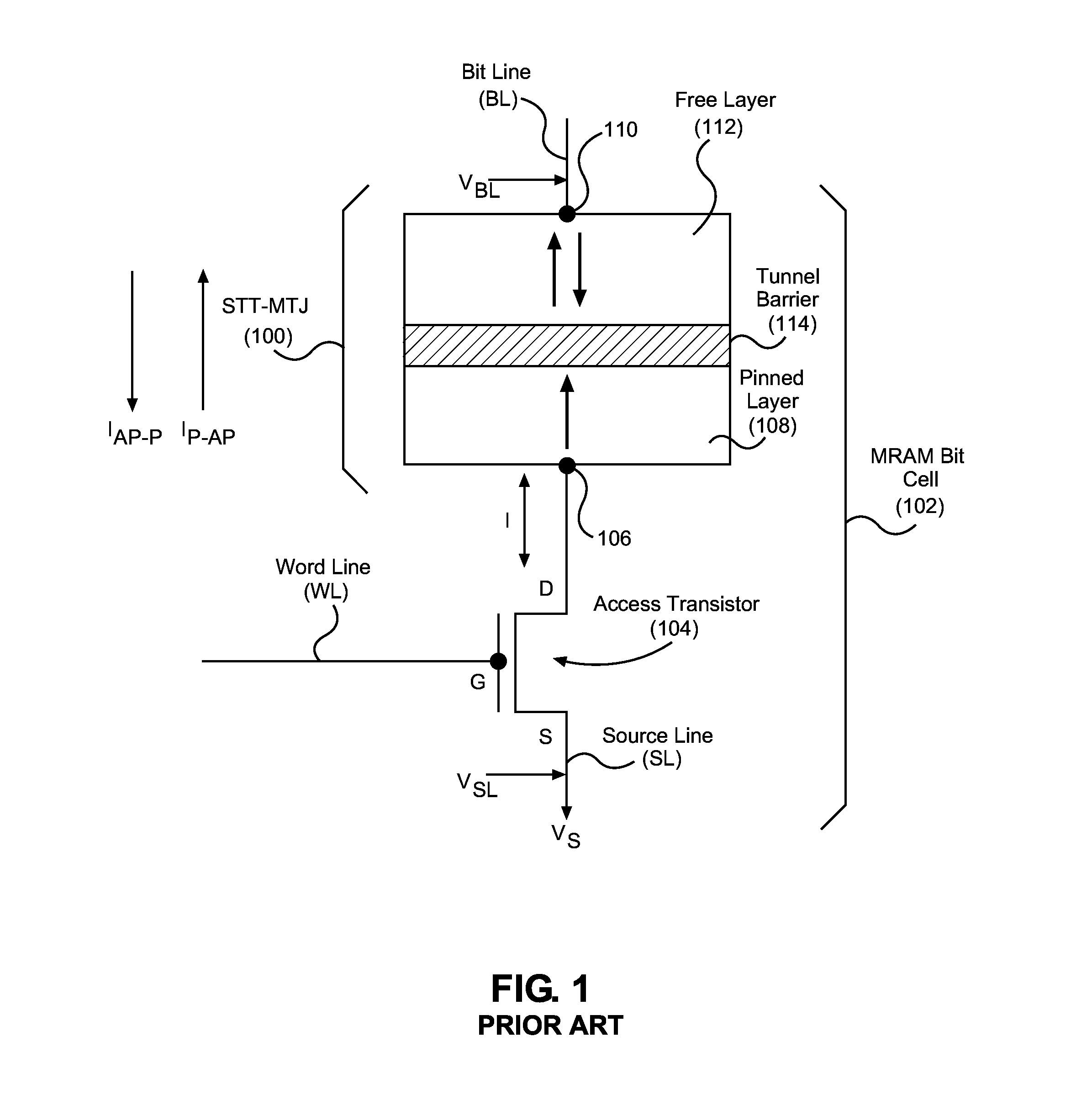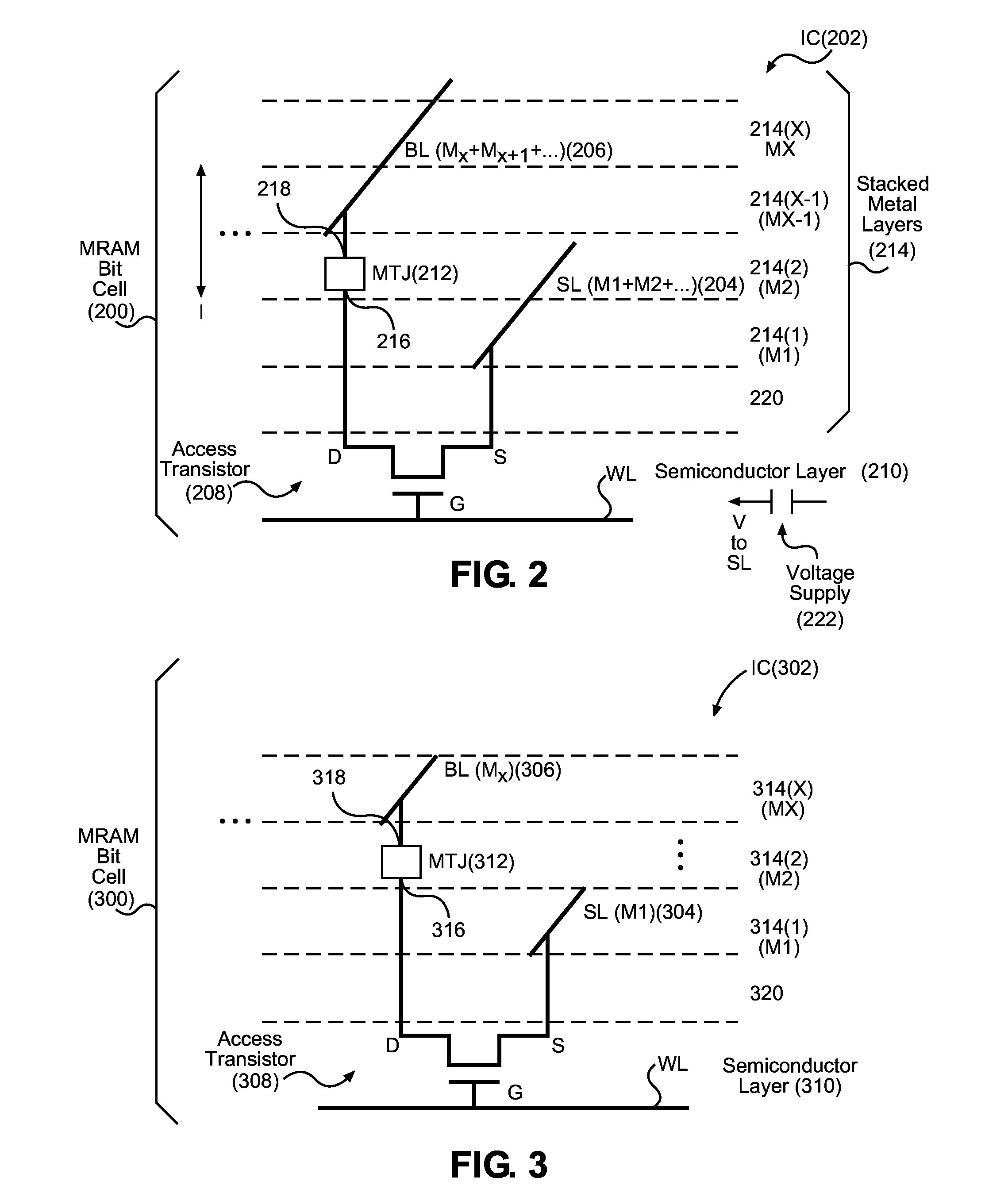MAGNETIC RANDOM ACCESS MEMORY (MRAM) BIT CELLS EMPLOYING SOURCE LINES (SLs) AND/OR BIT LINES (BLs) DISPOSED IN MULTIPLE, STACKED METAL LAYERS TO REDUCE MRAM BIT CELL RESISTANCE
a random access memory and bit cell technology, applied in the field of magnetic tunnel junctions, can solve the problems of increasing the number of metal wires, increasing increasing the loss of write current margin, etc., and achieving the effect of reducing the resistance of bit lines, reducing the resistance of source lines, and saving power
- Summary
- Abstract
- Description
- Claims
- Application Information
AI Technical Summary
Benefits of technology
Problems solved by technology
Method used
Image
Examples
Embodiment Construction
[0029]With reference now to the drawing figures, several exemplary aspects of the present disclosure are described. The word “exemplary” is used herein to mean “serving as an example, instance, or illustration.” Any aspect described herein as “exemplary” is not necessarily to be construed as preferred or advantageous over other aspects.
[0030]Aspects of the disclosure involve magnetic random access memory (MRAM) bit cells employing source lines and / or bit lines disposed in multiple, stacked metal layers to reduce MRAM bit cell resistance. Related methods and systems are also disclosed. Metal interconnection resistance of a source line and a bit line in an MRAM bit cell contributes towards the overall resistance of the MRAM bit cell. The resistance of the MRAM bit cell affects the amount of write current generated in the MRAM bit cell for a given voltage applied at an edge of an MRAM array including the MRAM bit cell. As node size is scaled down, metal interconnection resistance incre...
PUM
 Login to View More
Login to View More Abstract
Description
Claims
Application Information
 Login to View More
Login to View More - R&D
- Intellectual Property
- Life Sciences
- Materials
- Tech Scout
- Unparalleled Data Quality
- Higher Quality Content
- 60% Fewer Hallucinations
Browse by: Latest US Patents, China's latest patents, Technical Efficacy Thesaurus, Application Domain, Technology Topic, Popular Technical Reports.
© 2025 PatSnap. All rights reserved.Legal|Privacy policy|Modern Slavery Act Transparency Statement|Sitemap|About US| Contact US: help@patsnap.com



